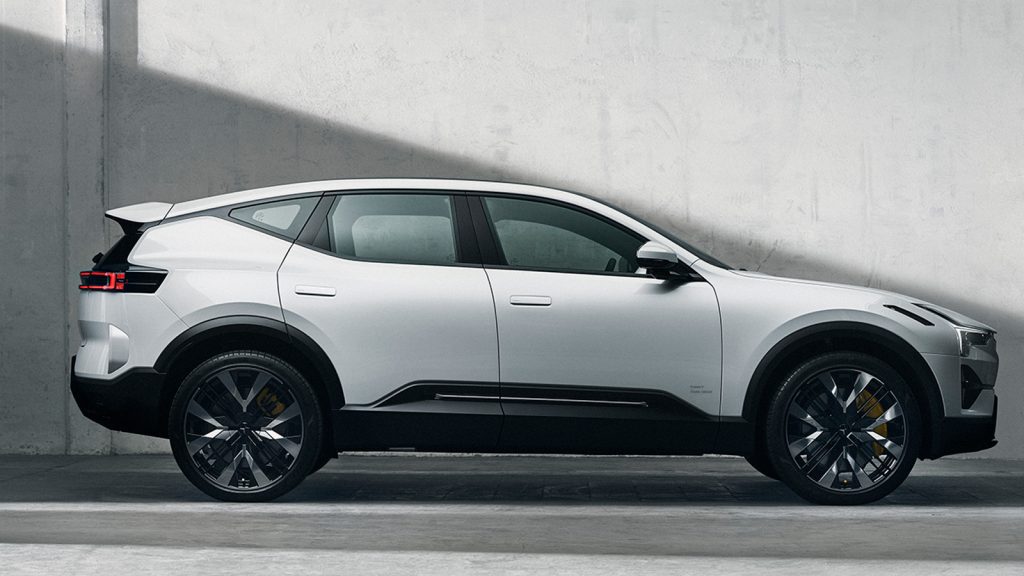For mostly psychological reasons, 300 miles of range is the magic number to consider an electric vehicle as being able to truly achieve “long range” status. The new Polestar 3 looks fantastic, is full of the kind of restrain ed Scandinavian design we expect, and sits in the popular SUV category. The most important number, though? 300.

In case you’ve just wandered onto this website and have no idea what a Polestar is, it’s basically a Sino-Swedish tie-up that sees Volvo’s parent company Geely working across continents to produce electrified cars with an Ikea aesthetic.
Their first car, the Polestar 1, was a hybridized-GT that offered a high level of performance wrapped in concept car skin. It was limited. Their first mainstream model, the Polestar 2, is a crossover-y sedan thing. It gets up 270 miles of range in Long Range trim and starts at about $48,400.

The Polestar 3 is the most conventional offering from the brand. It’s an SUV. People love SUVs. This is of the five-seat variety, somewhere in the Jeep Grand Cherokee range, being longer than the regular GC but shorter than the GC L. It doesn’t look anything like a Grand Cherokee. It looks just concept-y enough to stare at for a while.
As is popular today, the Polestar 3 has a dual-motor setup with the bias towards the rear wheels. The two motors produce 489 horsepower combined, though you can option the Performance Pack and get 517 horsepower in exchange for 30 miles of range on the EPA standard. The battery is a monster 111 kWh lithium-ion setup with prismatic cells, which is bigger by about 10% than the Model X 100D battery but, notably, has 48 miles fewer range.

Polestars, historically, have some of the best one-pedal driving feel and the company promises that’s the same here. For those who want performance, a Polestar 1-derived Torque Vectoring Dual Clutch setup sits on the rear axle. Having tried this system on a race track in a Polestar 1 it’s a setup that can actually adjust torque between the rear wheels and not just use the brakes to slow one wheel down. An adaptive dual-chamber air-suspension is also standard.
Inside it’s extremely Polestar as well and benefits from a high level of recycled or recyclable materials and welfare-certified leather. The Polestar 2 was the first car to launch with Android Auto as the default vehicle operating system and that continues here.

It sounds like from the press release that a Level 2 ADAS is standard, with a LIDAR-based option as an add-on in the future:
As standard, Polestar 3 features a total of five radar modules, five external cameras and twelve external ultrasonic sensors to support numerous advanced safety features. The SmartZone below the front aero wing collects several of the forward-facing sensors, a heated radar module and camera, and now becomes a signature of Polestar design. Inside, two closed-loop driver monitoring cameras bring leading eye tracking technology from Smart Eye to a Polestar for the first time, geared towards safer driving. The cameras monitor the driver’s eyes and can trigger warning messages, sounds and even an emergency stop function when detecting a distracted, drowsy or disconnected driver.
You can build your own now, with price starting at $83,900, which is less than a Model X by a good margin ($120,990) and a touch less than the BMW iX ($84,100).






